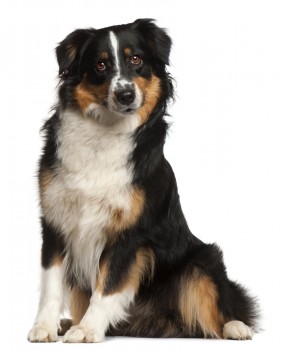 As compiled by the American Kennel Club:
As compiled by the American Kennel Club:
Australian Shepherd
The Australian Shepherd lives for his job, which still involves herding livestock and working as an all-purpose farm and ranch dog. He needs a lot of activity and a sense of purpose to be truly content. Due to the breed’s intelligence and versatility, “Aussies” also excel in AKC events such as agility, obedience and herding.
Belgian Tervuren
The Belgian Tervuren is highly devoted to work and family. While Tervs excel in obedience and agility competitions, this breed also makes an excellent therapy or guide dog, and is still outstanding at its original job of herding. Historically, this protective breed provided security for its farm and family and assisted with daily maintenance of the stock. The Belgian Tervuren enjoys having a job to do and needs daily exercise.
Bluetick Coonhound
The Bluetick Coonhound is very skilled at trailing and treeing raccoons and other small animals. Blueticks have a “bawling” bark that it uses frequently while out hunting! Blueticks can stay on the most intricate of tracks, making it a prized companion for active sporting families.
Briard
The Briard’s most common job has been herding, but his acute sense of hearing also makes him an excellent watchdog. The Briard is happiest leading a busy, active life. Briards are independent thinkers, so patience is necessary when training. Like many sheepdogs, this breed may be wary of strangers, but makes an excellent pet if time and effort is put in to raising him.
German Wirehaired Pointer
The GWP was created in Germany to be a versatile, multi-purpose hunting dog. A high energy and high drive breed, the German Wirehaired Pointer must receive regular exercise or have a job to do – otherwise, their creativity and independence may get them into trouble!
Giant Schnauzer
The Giant Schnauzer developed in Germany, where the breed was in high demand as farm help. He aided the shepherd in driving livestock to market and was used as a guard dog by the butchers and breweries. An extremely intelligent, energetic, strongly territorial dog, the Giant Schnauzer loves his owners and feels great responsibility to protect them. He learns quickly, however, and can distinguish between friend and foe. Giants need a lot of exercise, requiring daily walks, playtime with another dog or romps in the yard. He especially loves having a job to do.
Greater Swiss Mountain Dog
The Greater Swiss Mountain Dog (GSMD or “Swissy”) is a draft and drover breed that was bred to be robust and agile enough to perform farm work in very mountainous regions. As a working dog, Swissies like having a job to do and enjoy participating in hiking, carting, obedience trials, herding, weight pulling, and backpacking. Developed in the remote and isolated areas of Switzerland, the Greater Swiss Mountain Dog was originally used for draft work, livestock management (herding and guarding) and as the lookout on the farm.
Nova Scotia Duck Tolling Retriever
The Nova Scotia Duck Tolling Retriever has a unique job: the breed “tolls,” lures and retrieves waterfowl. The playful action of the Toller retrieving a stick or ball along the shoreline arouses the curiosity of the ducks offshore. This lures them within gunshot range, and then the dog is sent out to retrieve the dead or wounded birds. Expect a lot of work and play from this breed!
Old English Sheepdog
The OES is an athletic animal, filled with clownish energy, and therefore requires regular exercise or a job to keep him busy. Although affectionate with his family, he may try to herd people or other objects if he doesn’t have enough to do! The OES enjoys working and is seen in the conformation, obedience, agility and herding rings today, harkening back to when they used to herd sheep and cattle into major city markets.
Rottweiler
The Rottweiler is happiest when given a job to perform. He can be successful as a herder, service dog, therapy dog, obedience competitor and devoted companion. The Rottweiler’s ancestors were the drover’s dogs accompanying the herds the Romans brought with them when invading Europe. The controllable herding and guarding instincts were recognized by the Germans, and dogs were selectively bred for these traits.
Think a different breed should be on this list? Let us know and send a pic of your dog to communications@akc.org!
Until next time,
Good day, and good dog!
